There used to be a main residence of Mito Domain in Edo City during the Edo Period.The Mito Domain was governed by one of the three privileged branches of the Tokugawa family, so called “Gosanke”. The whole site of the residence coveredthe area of approx.336,000M2. After the Meiji Restoration, the site and the residence were returned to the Meiji government following a new regulation called “Hanseki Hokan”.Since then the site was controlled by the army and most of the area was utilized for an ordnance factory of the army. However the garden area was preserved by Field Marshal Aritomo Yamagata, for future generations because of its outstanding scenic beauty.It was a beautiful Japanese style garden with artificial ponds, hills and streams.promenades surrounding the ponds and running among the hills. The Emperor Meiji and his family occasionally visited the garden to enjoy the scenic beauty. And the garden was introduced to important foreign visitors as one of the finestgardens across the country.At the present time, it is opened to the public as the Koishikawa-Korakuen Gardenunder the control of Tokyo Metropolitan Government. The site other than the garden has been utilized for a baseball stadium, an amusement park, a multi-purpose auditorium where families along with their children can enjoy the facilities, since the ordinance factory was moved to Kokura in Kyushu in1935.
This Japanese style garden was originally created by a prominent gardener inKyoto, named Sahei Tokudaiji by order of the feudal lord of Mito Domain, Yorifusa Tokugawa who was the 11th son of the first Shogun, Ieyasu Tokugawa in 1629.In the late 1600’s, the 2nd lord of Mito Domain, Mitsukuni Tokugawa invitedZhi Zhiyn, one of the greatest scholars of Confucianism in Ming Dynasty inChina and let him join the renovation of the garden as the designer.This made us to believe an aesthetic and philosophical idea of a Chinese Confucianscholars about the design of the garden.The garden was created on the southern end of Koishikawa Hill by takingadvantage of its wavy slant and Kanda waterworks.
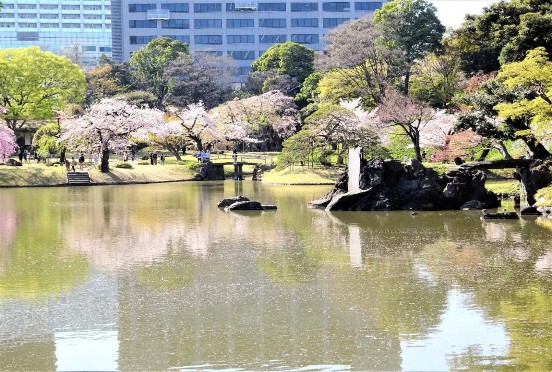
A big pond named “Daisensui in the shape of Biwa-Lake, takes a prime positionin the center of the garden. And two smaller ponds are placed on the north-west side and on south-east, adjacent to the main pond.There is a holy island called “Horai-Jima” in the center of the main pond anda smaller islet at the south-east end. The islet is modeled after “Chikubu-Jima Island” being known as the historic and sacred islet in Biwa-Lake.The stream of Kanda Waterway (Waterworks) flows across the north part ofthe garden from west to east. It supplies water to the ponds and other streamsthroughout the garden.
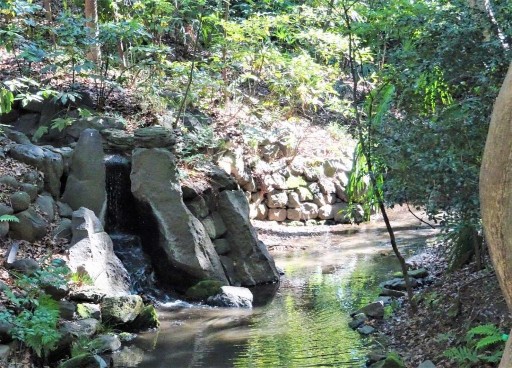
The streams are arranged around the ponds, modeled after well-knownJapanese scenic spots such as Ooigwa River in Kyoto on which nobles enjoyedpleasure-boating in ancient time, Tatsutagawa River in Nara along whichbeautiful autumn tint of maple leaves can be viewed, and Kisogawa River in Gifuwhich shows splendid canyons with uniquely-shaped rocks.

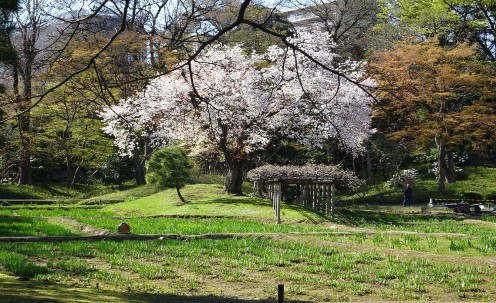
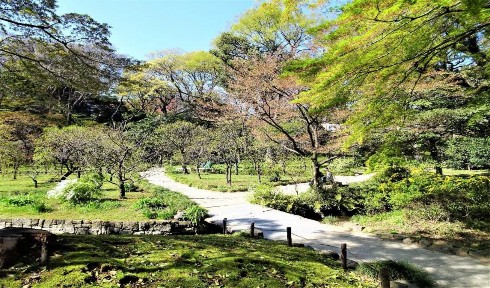
In the north part of the garden, there are a plum-grove, a wisteria trellis,a flooded iris field and a rice paddy. Passing through the entrance gate of the garden, most of visitors are attracted by beautifully-clustered flowers onthe weeping branches of cherry tree every spring. Strolling on promenades running throughout the garden, visitors can enjoyfigurative arts of Japanese gardening such as ponds, rolling hillocks, valleys,streams, cascades, uniquely-shaped rocks, bridges, groves, stone lanterns,gazebos and so on.
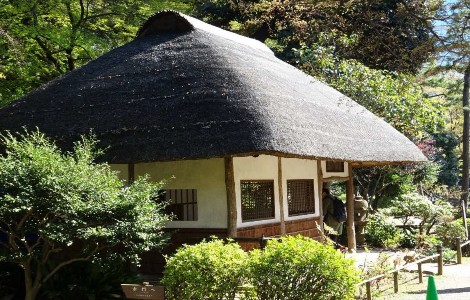
Among various spots, visitors might be fascinated by a gazebo situated in a grove at the north of the main pond. It is named “Ku-Hachi-Ya” whereMitsukuni Tokugawa who renovated the garden, enjoyed splendid scenery ofJapanese garden while tasting sake wine. The name of “KU”and“HACHI”implies such a discipline that one should not excessively drink sake but holddown the volume to 90% (KU) in daytime and to 80%(HACHI) in the evening.The tasteful gazebo with straw-thatched roof is in perfect harmony with itssurrounding landscape.
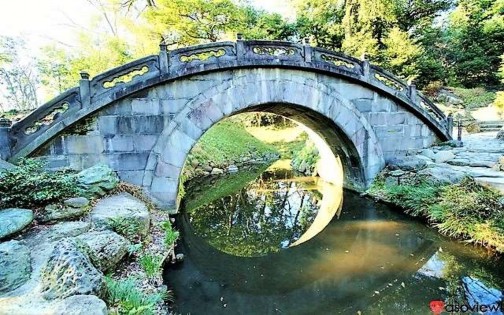
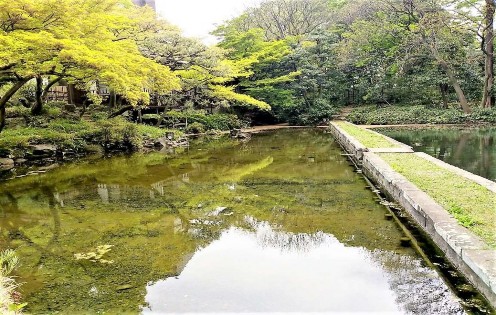
The arched stone bridge over the steam simulating “Ooigawa River” is called“Ehgetsu-Bashi” (Full Moon Bridge). It is said to be designed by Confucian Zhi Zhiyn. The hemicycle bridge is reflected in the stream and thereby forms an image of a full moon. It looks as if the moon wades across the stream.The walking trail is laid across the small pond in north-west of the garden, modeled after the renowned scenic spot, the bank on the e West in HanzouCity in China, which was created by the great poets such as Bai Juyi and Su Shiin ancient China. This lay out was also instructed by Confucian Zhi Zhiyn.The name of the garden, “Koraku-En” was derived from a proverb described by a great Chinese poet, Fan Zhongyan in his prose poem titled with “Memorialto Yueyang Tower.The proverb says that rulers should seek pleasure only after dealing difficulLakties and seek pleasure only after the happiness of the people is assured. The name of“Koraku” means “Pleasure later”.The Koihikawa Korakuen Garden weaves spiritual & philosophical ideas inAncient China as well as Japanese subtle aesthetic sense into the designing ofthe Japanese garden.It is one of the finest Japanese style gardens which is located within 5 minuteswalking distance from JR Suido-Bashi Station.Operation hour: AM9;00-PM4:30Holiday: From Dec. 29 to Jan.1st.Entrance fee: 300 in Jp. Yen per person.Guided tour in English: AM10:00- on every Saturday. (FOC)
Tokyo Dome City
There is an entertainment complex named “Tokyo Dome City” adjacent to Koishikawa Korakuen Garden on the east side. The complex consists of an indoor baseball stadium called “Tokyo Dome”, an amusement park called “Tokyo Dome City Attractions” and “Tokyo Dome Hotel”. The Tokyo Dome City Attractions incorporates a theater, a spa, restaurants and a shopping mall as well as amusement park.
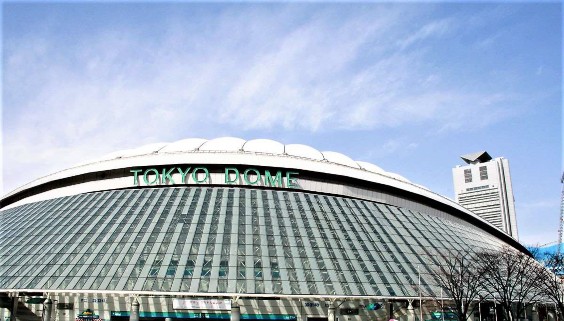
Tokyo Dome holds mainly professional baseball match. It is a home ground of“Yomiuri Giants”, professional baseball team. It carried out not only Japanesebaseball games but also the World Series. People affectionately call it by itsnickname “Big Egg” referring to the outstanding domed roof. Building Area: 46,755 sq m (503,267 sq ft)Playground area: 13,000 sq m (139,931 sq ft)The distance of right and left wings: 100 m (328.1 ft)The distance of center: 122 m(400.3 ft)No. of floors: 6 F on ground and 3F underground,Capacity: 55,000 persons.The domed shaped roof enables to keep Max. 61.69M for the height from the levelof the playground to the ceiling. It has been reported that the ball incidentallyhappened to hit the ceiling of the stadium several times in the past 30 years.One might be curious to know which slugger hit the ball at the ceiling and how todeal with such incidental cases in accordance with the home rule. The roof of the stadium is supported by air pressure inside the dome which is kept 3 psi higher than that outside. This enables to push the whole roof up to form Dome Shape. The inside air pressure is generated by 36 air blowers. And all of entrances and exits of the dome are provided with revolving or air locking doors in order to minimize the leak of air pressure from the inside of the dome. The whole stadium is effectively sealed against the outside. The layer of the roof is composed of external membrane, lining membrane and inbetween wire mesh. The membranes are made of weather resistant materials such as fiberglass and polyester fabrics coated with fluorine.
The Tokyo Dome hold not only baseball game but also other events such as boxingworld title match, auto show, American football, soccer, concert and others.Various concerts are performed by world-wide famous singers such the Rolling Stones, Michael Jackson, Whitney Houston, Mariah Carey, Beyonce, Madonna
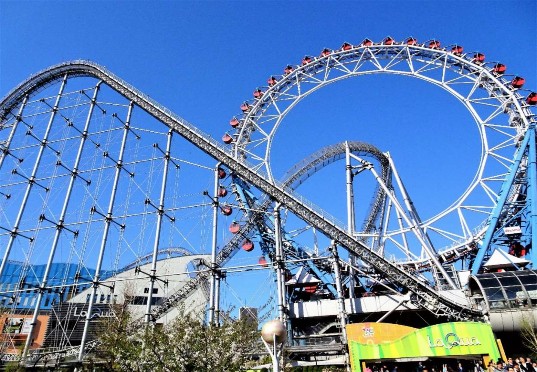
The Tokyo Dome City Attractions (Amusement park) on the east side of base ball stadium, is offering various amusement facility such as a roller coaster called “Thunder Dolphin”, a centerless non-rotating Ferris named “Big O” and so on.It is a children-fascinating quarter.In addition, on the south side of the baseball stadium there is an off-tract bettingshop for horse racing, called “Wins” JRA. It is alive with a lot of race-trackers every weekend.Operation hour of Tokyo Attractions City: AM10:00-21:00
Bunkyo Civic Center

Bunkyo Civic Center is the government building for Bunkyo ward in Tokyo. It is located next to Tokyo Dome City Attractions. It is 28-story building with the height of 142M. It stands towering over the surrounds. It is slender but top-heavy building. The head portion is protruded with 3-layered round deck. It looksas if the building is wearing a cap.
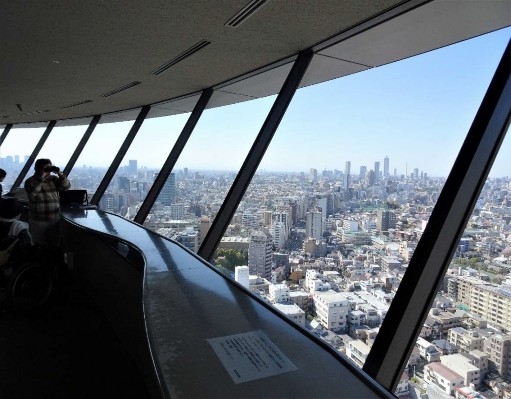
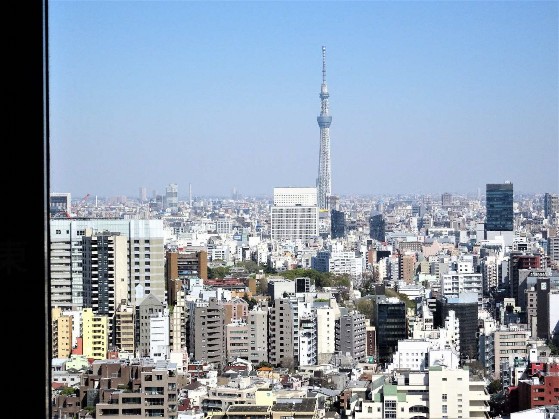
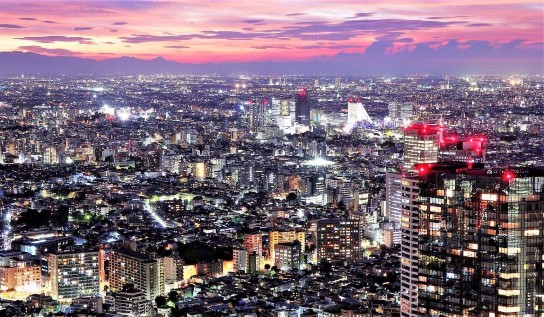
The 25th floor of the building is open to the public as an observation deck.One can enjoy a 330-degree panoramic view of Tokyo through tilted glass windowson the floor. It is possible to view the Tokyo Sky Tree to the east, Mt. Tsukuba to the northand to the west skyscrapers in Shinjyuku area and also Mt. Fuji on the clear dayduring winter season. On the south side of the deck, there is a restaurant where one can taste chilled beer while viewing the night view of Tokyo.
Kodokan Judo Institute (or short Kodokan)
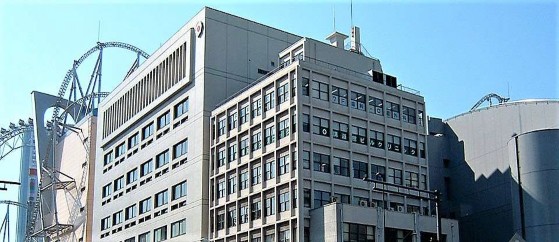
The Kodokan is the headquarters of the public interest incorporated Judo association.It is located on the east side of Bunkyo Civic Center, facing the Hakusan Street.
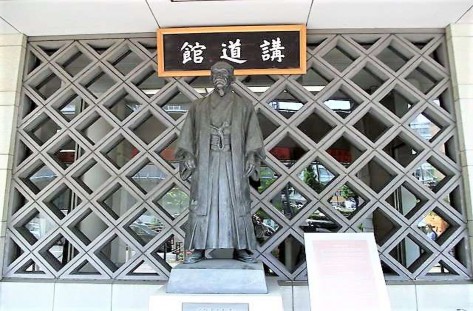
It was founded by Jigoro Kano in 1,882, aiming for the study of Judo, its education and its promotion.He established “Judo” by categorizing and systemizing the techniques of Japanesetraditional martial arts called “Jujutsu “and developed it to the internationalmodern sports.He taught that Judo is the way of the most efficient use of both physical andmental energy. The players bring up physical and mental strength, and gradually acquire the principle of Judo through practicing the attack and defense techniques of Judo. Thus, the ultimate objective of Judo discipline is to be utilized as a means to self-development, and further to make a positive contribution to society. He is said to be the father of Judo.Judo is now taken up in the Olympic Game. It is said that the population of the players are around 3,700,000.- over the world. Specially in France and Brazilit reaches 800,000.- and 1,000,000.- respectively. In Russia, around 100,000 peopleare playing Judo. Vladimir Putin, the President of Russia, played Judo in Okinawawhen he attended G8 Summit Meeting held in Okinawa in 2,000 and he also visitedKodokan headquarter to inspect a demonstration of Japanese traditional martialarts. He is a lover of Judo.
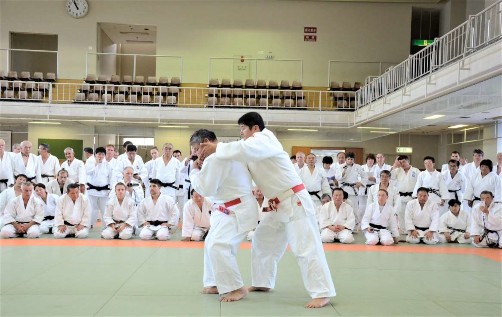
A lot of overseas practitioners visited Kodoka every year. The 8th floor ofKodokan building is open to the public from 16:00 to 20:00 on weekday andfrom16:00 to 19:30 on Saturday. Anyone can observe practicing of Judo inthe big training hall laid with 420 tatami mats (Straw mats) free of charge.There is a souvenir stall on the grand floor where they are selling originalbrand goods of Kodokan such as Judo outfits, T-shirts, hooded jackets, bags andetc. It is often observed that overseas visitors are buying their favorite goods.there in memory of their visiting the headquarter of Judo.Making an application in advance, overseas players are able to participate in hands on training in English.
All the facilities mentioned above are conveniently located in a same districtclose to JR Suido-Bashi StationIt is recommendable place where one can enjoy the panoramic view of Tokyo, the beautiful Japanese garden, the Japanese contemporary martial arts and the amusement quarter within the limited schedule of the travel.
